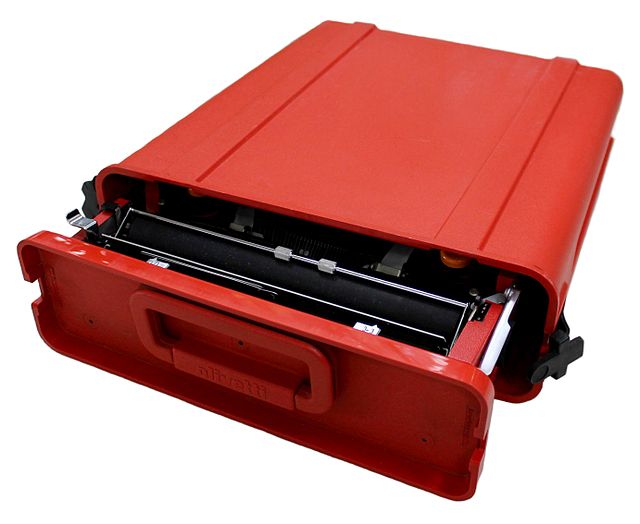The Olivetti Valentine is a portable, manual typewriter manufactured and marketed by the Italian company, Olivetti, that combined the company's Lettera 32 internal typewriter mechanicals with signature red, glossy plastic bodywork and matching plastic case. Designed in 1968 by Olivetti's Austrian-born consultant, Ettore Sottsass, assisted by Perry A. King and Albert Leclerc – it was introduced in 1969 and was one of the earliest and most iconic plastic-bodied typewriters.
The Olivetti Valentine designed by Ettore Sottsass (with Perry King and Albert Leclerc)
Olivetti Valentine (front view)
Olivetti Valentine (with case)
Olivetti Valentine (another view with case)
A typewriter is a mechanical or electromechanical machine for typing characters. Typically, a typewriter has an array of keys, and each one causes a different single character to be produced on paper by striking an inked ribbon selectively against the paper with a type element. At the end of the nineteenth century, the term 'typewriter' was also applied to a person who used such a device.
Mechanical desktop typewriters, such as this Underwood Typewriter, were long-time standards in government agencies, newsrooms, and offices.
Peter Mitterhofer's typewriter prototype (1864)
The 1969 Olivetti Valentine typewriter, featured in the permanent collections of the Metropolitan Museum of Art, Museum of Modern Art, and Cooper Hewitt, Smithsonian Design Museum in New York; London's Design Museum and Victoria and Albert Museum.
An Elliott-Fisher book typewriter on display at the Historic Archive and Museum of Mining in Pachuca, Mexico







